-
Software
-
CAM software
- Tebis Automill
- CNC programming
- CNC automation
- CNC simulator
- Multiple setup
- Robotic machining
- CNC drilling
- Deep-hole drilling
- Combined turn-milling
- CNC turning
- Turn-milling
- 2.5D milling
- 3D milling
- 5-axis milling
- Slot milling
- Trimming
- HPC milling
- HFC milling
- Circle-segment cutters
- Sinker EDM
- Wire EDM
- 3D laser cutting
- Laser hardening
- Laser weld cladding
- CAD software
- CAQ software
- MES software
- Products
- Part stories
-
CAM software
- Services
- Consulting
- Sectors
- References
- Company
- News

-

Using reverse engineering to align the CAD world with the real world
Create and update CAD surfaces with digitized data
Reverse engineering generates a CAD surface model that precisely represents a scanned object. Reverse engineering is used everywhere where work is performed manually on real objects and a CAD model is required for the subsequent process.
In model and mold manufacturing, design objects and vehicles modeled in clay are scanned and transferred to CAD surfaces.
In die manufacturing, manual changes to sheet-metal dies in the tryout phase are scanned The existing CAD model is updated based on the scanned data. CAD surfaces often have to be created for dies for which no CAD data at all are available.
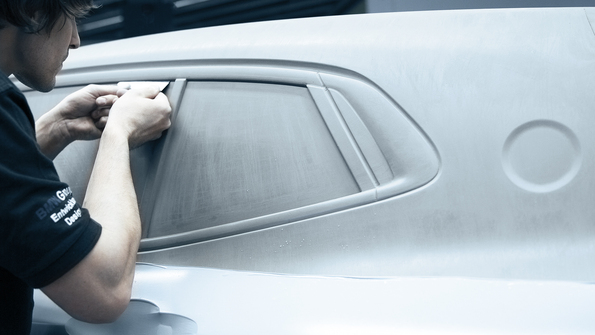 Manually formed or modified objects are imported to Tebis after scanning.
Manually formed or modified objects are imported to Tebis after scanning.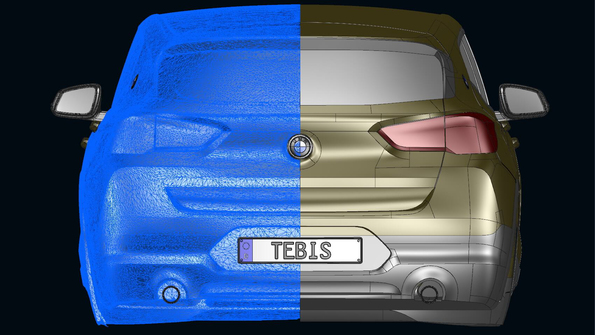 The digitized data are used to create meshes (blue nets). Reverse engineering generates a high-quality CAD surface model that is fully usable for design.Success story from BMW Design
The digitized data are used to create meshes (blue nets). Reverse engineering generates a high-quality CAD surface model that is fully usable for design.Success story from BMW DesignIn cooperation with the BWW Group, we have continually reduced the time required for design surfaces in recent years
Today, high-quality CAD design surfaces for a vehicle outer skin can be generated in less than 50 hours.The fast track to up-to-date CAD dataQuickly generate surfaces and quickly adapt to modificationsHigh CAD surface qualityImmediate use of CAD surfaces in subsequent processesReverse engineering and design in a single systemHigh degree of flexibility for designersHow does it work?
Surface design and reverse engineering in a single application
In the same CAD file, the Tebis designer analyzes and optimizes the quality of the digitized data and then creates a wire-frame model and then the surface model is created based on that. Using the practical curve and surface functions, the designer supplements the surfaces generated by reverse engineering Free-form surfaces can be quickly generated using Tebis surface technology – and in class-A quality.
View video / contact formPlease select the Preference cookies to activate the display.Activate cookiesThe video shows an application from die manufacturing: No special knowledge is required to create CAD design data from scanned sheet-metal parts.View video / contact formPlease select the Preference cookies to activate the display.Activate cookiesThe video shows how easily the surface structures are drawn on the digitized data for the sheet-metal part, and how quickly a surface model with tangential free-form surfaces is created from that.These are the steps for using reverse engineering to generate high-quality CAD surfaces:
- Import STL data
- Analyze and edit mesh data
- Draw wire-frame model on mesh data
- Generate individual surfaces in the wire-frame model
- Analyze surfaces
- Optimize surfaces
- Continue design work on the part
Always close to the mesh
Designing intuitively using the wire-frame and surface models
Using the semi-automatic and interactive drawing functions, users create an intelligent wire-frame model based on the scanned object (mesh model), on which the degree and segmentation of the surfaces and the quality of the surface transitions are automatically controlled. Using the wire-frame model, the user can define the layout of the surfaces and the qualities of the transitions to the adjacent surfaces. Tebis automatically calculates the surface model from the wire-frame model and the meshes. Using tolerance values, the user determines how tightly the wire-frame model and surfaces "adhere" to the digitized data.
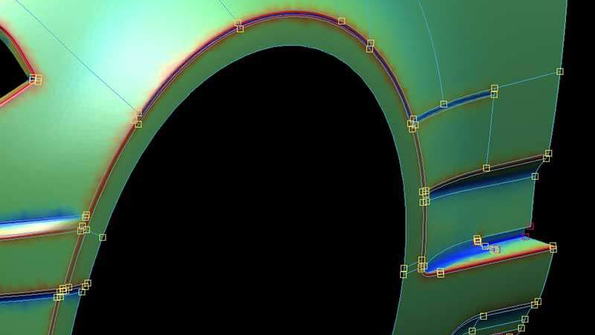 Tebis offers convenient functions for generating the wire-frame model that are specially developed for working with stored meshes.
Tebis offers convenient functions for generating the wire-frame model that are specially developed for working with stored meshes. Tebis reverse engineering: from mesh (scan data) via wire-frame to surface model
Tebis reverse engineering: from mesh (scan data) via wire-frame to surface modelMore control of surface quality
Precisely adjust surface quality in transition areas
High-quality design surfaces require first-class CAD surface quality, especially for defined characteristic lines. Tebis enables precise control of the transition areas between two main surfaces or connecting surfaces (natural or trimmed surfaces), in addition to the basic surface approximation settings. The user specifies an area around the edge where the surface approximates the boundary curve rather than the scan data. The change in the CAD surface is immediately visible in Tebis. The affected area can be easily adjusted until the optimal surface quality is achieved.
View video / contact formPlease select the Preference cookies to activate the display.Activate cookiesDeveloped with BMW Group Design: Within the G0 loop radius, Tebis approximates the surface more to the boundary curve rather than to the scan data. The resulting surface can be easily and systematically optimized even for different part structures.In die and mold manufacturing
For changes and missing die data
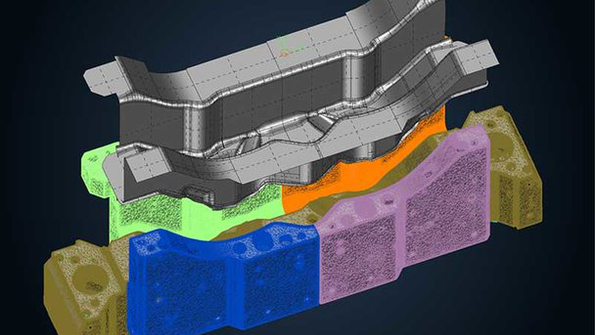 Reverse engineering in die manufacturing
Reverse engineering in die manufacturing Reverse engineering in mold manufacturing
Reverse engineering in mold manufacturingTebis reverse engineering quickly generates virtual twins of real forming and injection molding dies. Existing CAD data can also be considered. In the following cases, reverse engineering is an extremely useful tool that yields significant time savings:
- Feedback of manual changes to the die from tryouts into the existing CAD model and ongoing work with a realistic, updated geometry
- Scanning a drawn sheet metal part and providing it as the surface model for subsequent operations (e.g. trimming) and fixtures
- Generating surfaces based on FEM meshes from simulation systems
- Production of a second die set, e.g. for additional production locations
- Repair after die breakage
Updating CAD surfaces on manual changes in the tryout
Die makers manually change dies in the tryout phase. This causes the CAD model to lose its validity. With reverse engineering, manual changes are scanned and conveniently imported into the CAD model file. This yields tremendous time savings for further optimization of the die and for duplicates.
Reverse engineering based on simulation data
Mesh data from the drawing simulation can also be used as the basis for reverse engineering. First, the curvatures of the draw die system are analyzed. The designer then generates the surface layout and fills the individual areas with four-cornered surfaces and n-cornered surfaces trimmed as desired. Your method planners can very quickly obtain surface models in this way.
In design model making
For verification in form development
CAD surfaces are the starting point for all design and manufacturing processes after model making. If the form is developed by manual design methods like clay models or if the items are parts for antiques or art objects, the CAD world must simulate reality as precisely as possible.
Model makers use reverse engineering to combine manual work and design technology and benefit from both worlds. You can create CAD surfaces for your physical models with very little effort. Learn more about the technical developments in cooperation with BMW Group Design. Reliable methods have been developed to combine form-finding via manual design as effectively as possible with virtual design.
Complete scope of functions for curves, meshes and surfaces
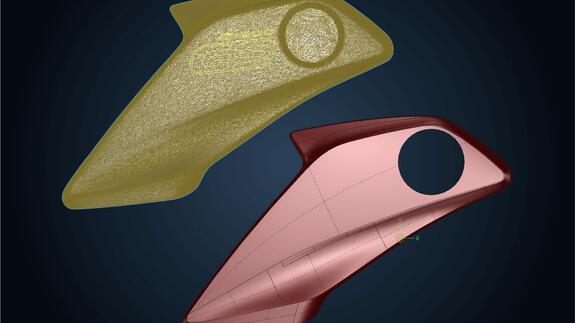 Reverse engineering is used to generate surface models in class-A quality from digitized surfaces in just a few hours.%}
Reverse engineering is used to generate surface models in class-A quality from digitized surfaces in just a few hours.%}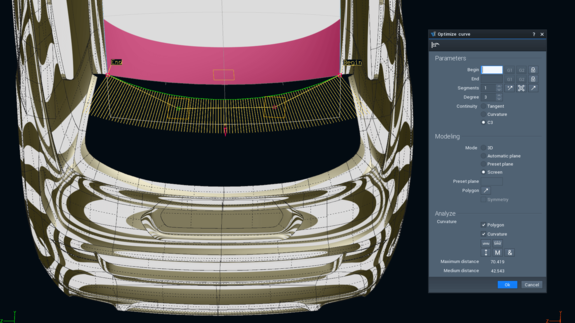 Real-time analyses support the designer in curve and surface modeling.%}
Real-time analyses support the designer in curve and surface modeling.%}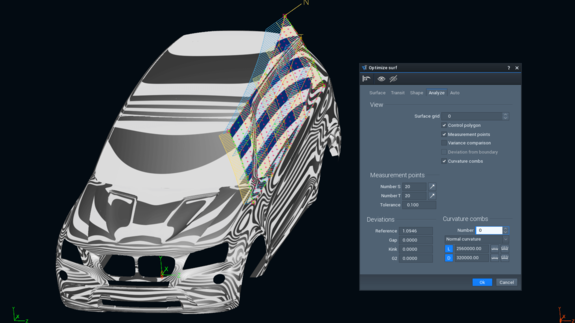 Changes in polynomial degree, continuity, segmentation, curvature properties etc. are made in real time.%}
Changes in polynomial degree, continuity, segmentation, curvature properties etc. are made in real time.%}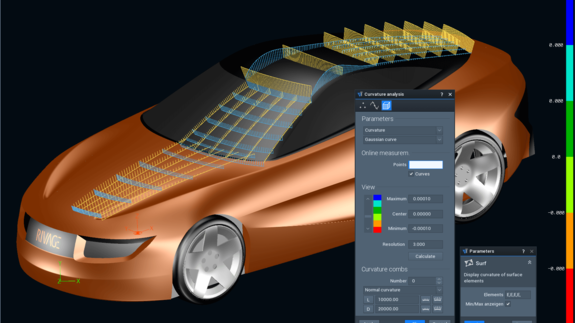 Highly sensitive tools for curvature diagnosis are available for evaluating surface quality.%}
Highly sensitive tools for curvature diagnosis are available for evaluating surface quality.%}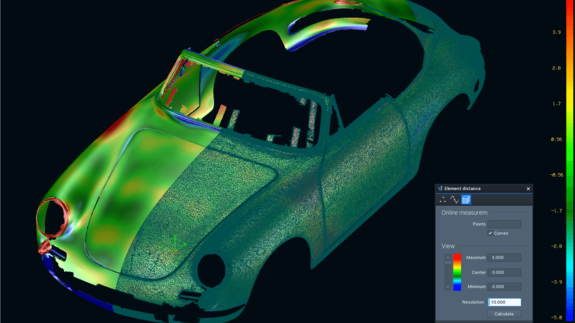 Curve, surface and digitized data are managed and analyzed together.%}
Curve, surface and digitized data are managed and analyzed together.%}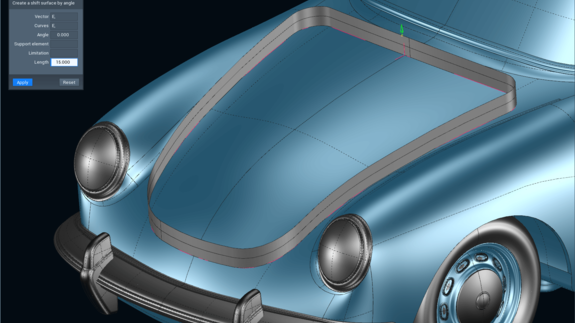 Design and reverse engineering are combined in a single user interface.%}
Design and reverse engineering are combined in a single user interface.%}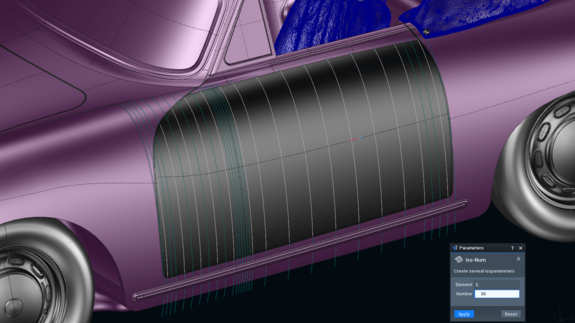 High-quality approximation methods ensure high-end surface quality.%}
High-quality approximation methods ensure high-end surface quality.%} Design and reverse engineering enable optimal surface layout.%}
Design and reverse engineering enable optimal surface layout.%}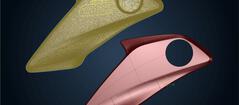
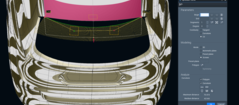
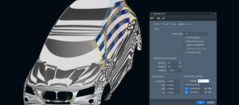
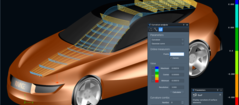
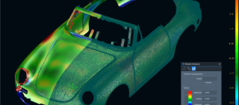
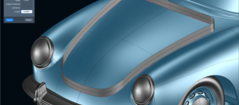
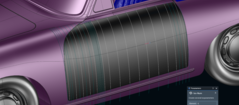
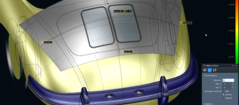

The new process enables exactly the same dies to be quickly and efficiently fabricated and tried out for multiple locations at the same time. Our die manufacturers worldwide have benefited from this process. It allowed us to very quickly produce the dies for Mexico in a standardized process.
Roland Schöbel, Volkswagen AG, WolfsburgTebis enables a very simple and fast realization of reasonable extension designs to the scanned mesh data. It is a unique advantage that in Tebis you can combine meshes and surface elements extremely well and then mill them all at once using the CAM modules.
Christoph Schneeberger, MS Design




